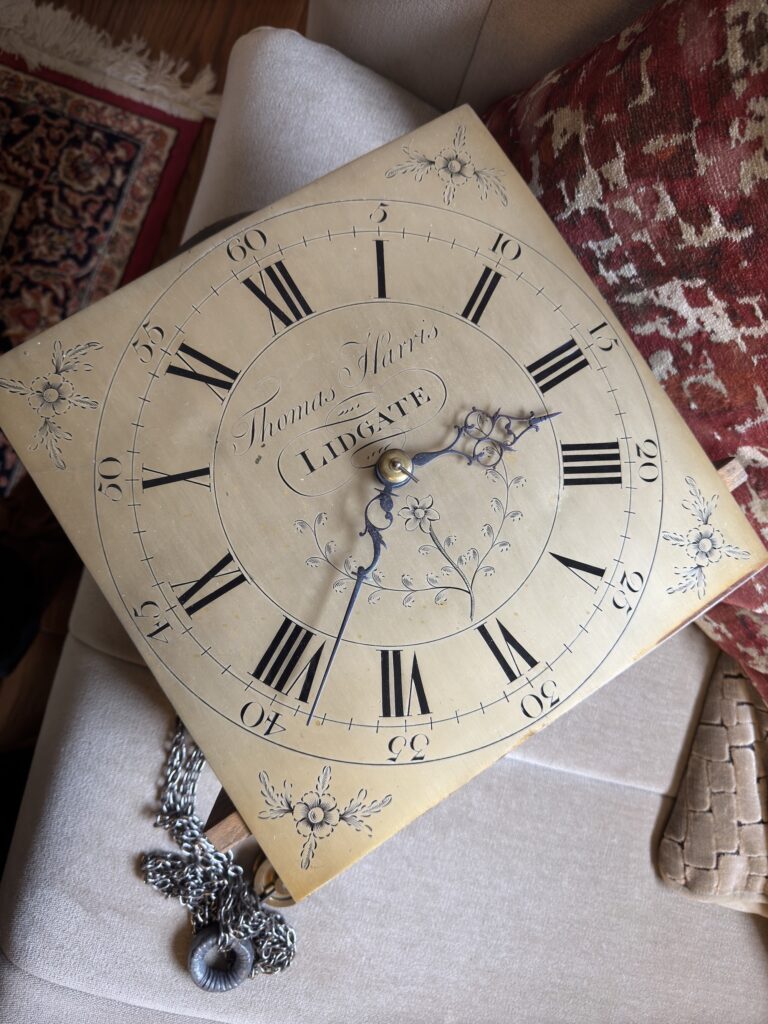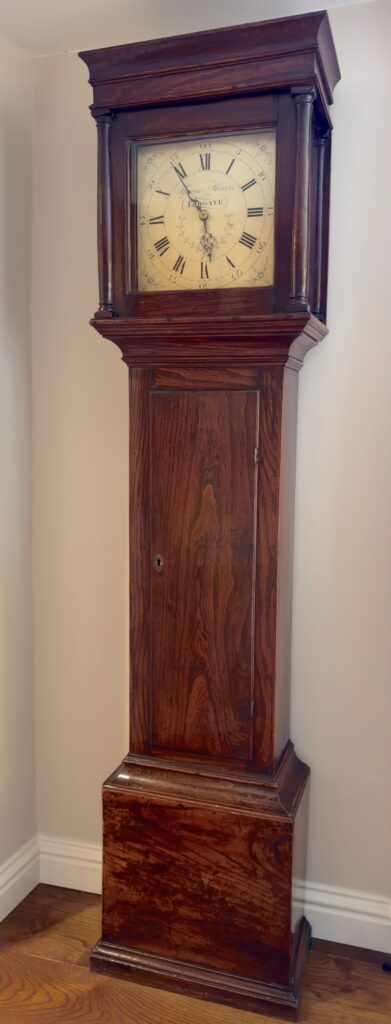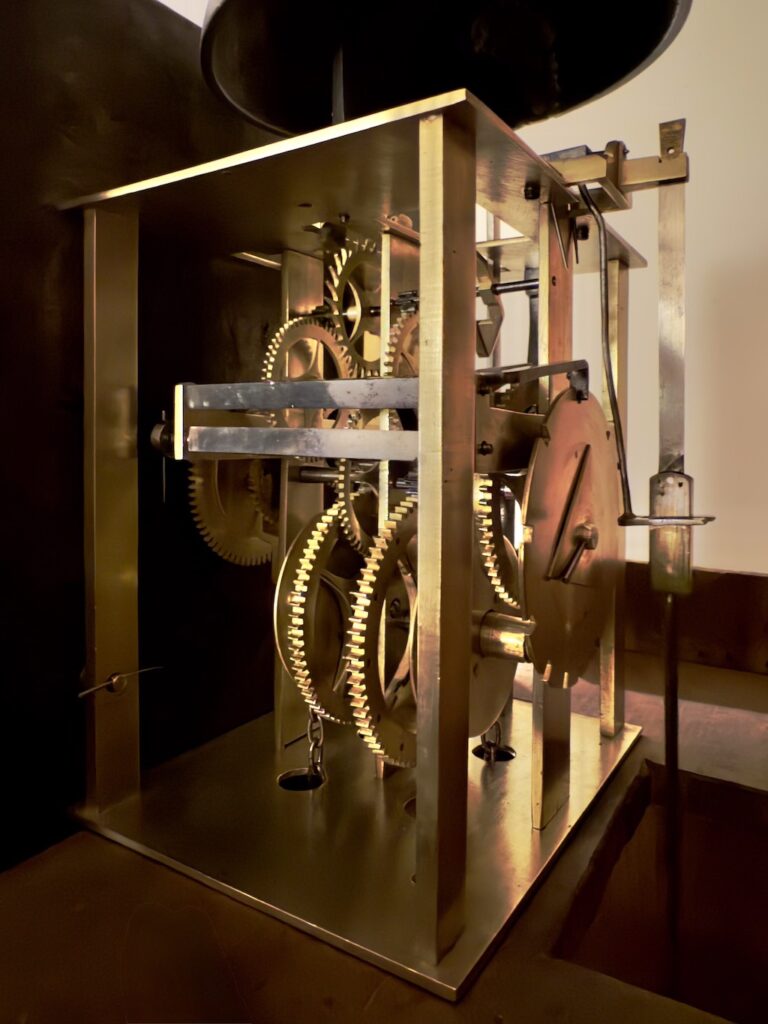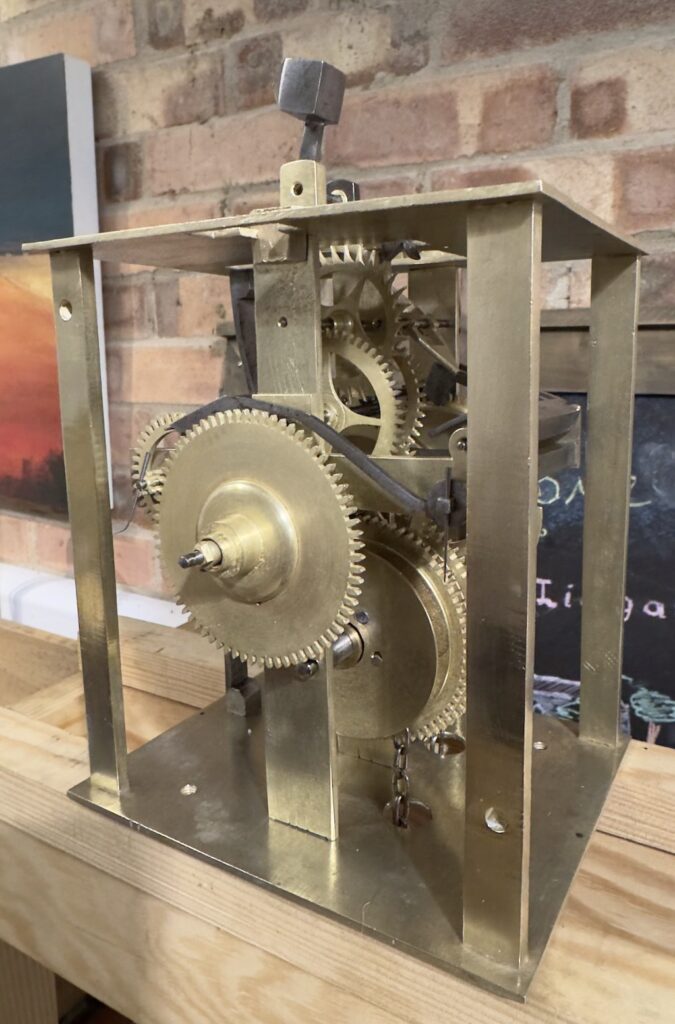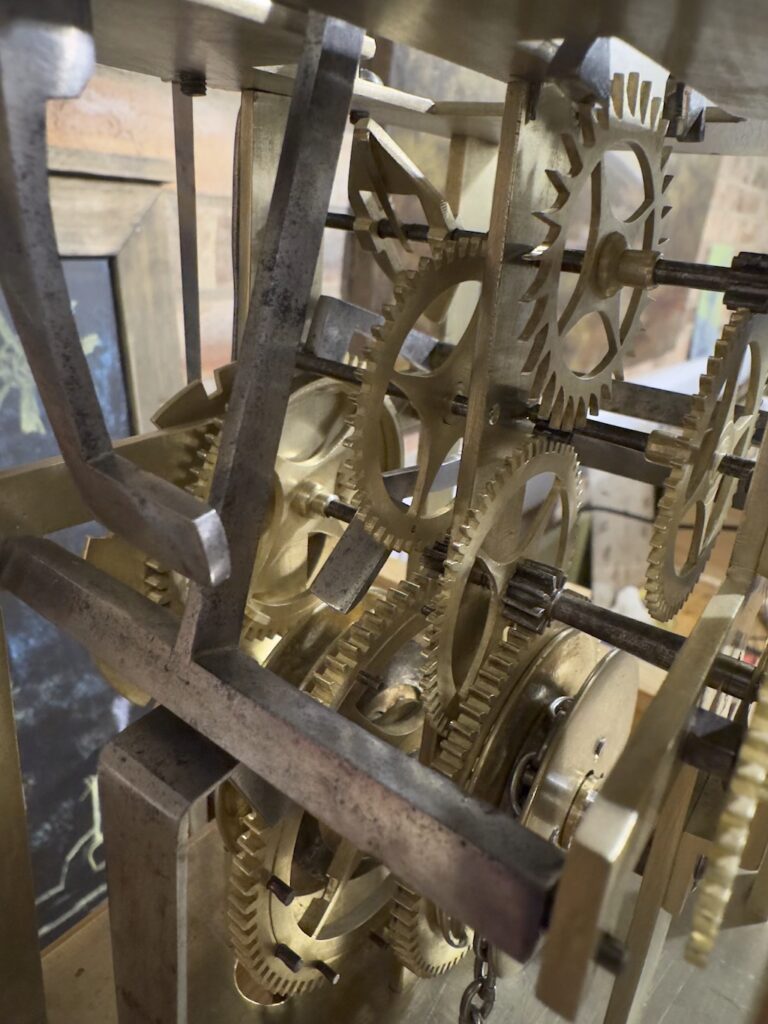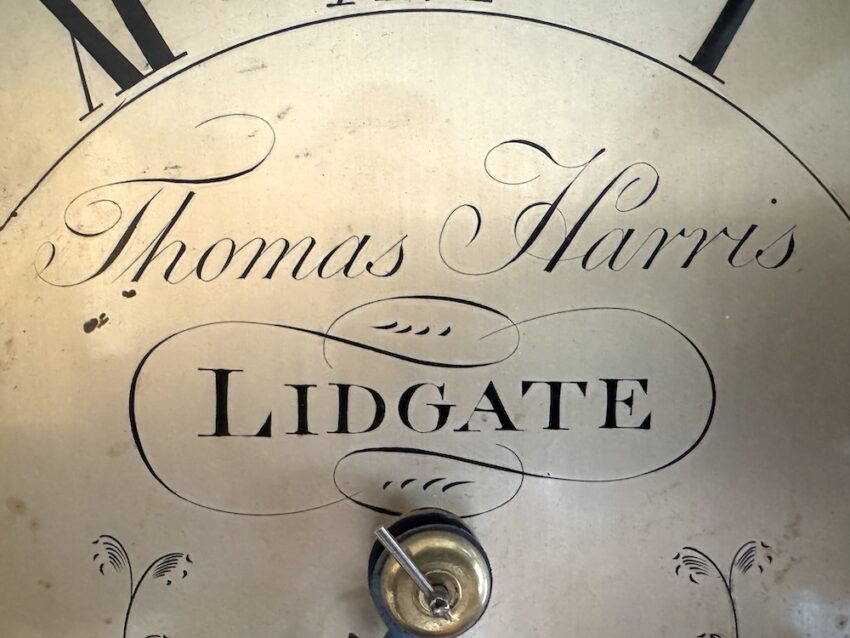Lidgate’s clockmaker, Thomas Harris
Did you know that for a brief spell at the end of the 18th century, clocks were made in Lidgate?
Despite the small population of our village, in 1790s an horologist and clockmaker by the name of Thomas Harris lived and worked here.
According to a supplement to Haggar and Millar’s book, “Suffolk Clocks & Clockmakers”, Thomas Harris was born in 1769 in Chippenham, but at some stage moved to Lidgate, possibly after he married his wife Jane Fincham in 1791.


By using church records of his children’s baptisms, the writers of the Chronicle infer that his Lidgate residency fell in a four-year period between 1792 and 1796. So, between those dates there were clocks being produced right here in Lidgate.
The search for a Lidgate clock
As an avid clock repairer myself, ever since I learned this I have been on the look out for one of Harris’ clocks.
A tantalising photograph of the dial of one of his clocks is included in the original Haggar and Millar book, which was first published in the mid-1970s. Here is that image:
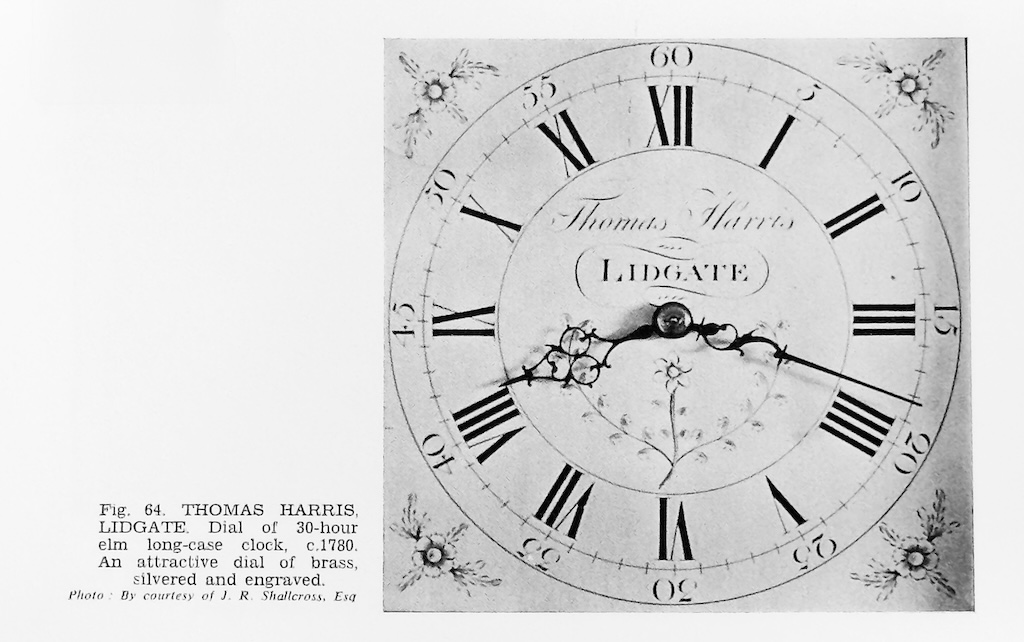
Other than this solitary mention, there is also a record of one of his clocks being sold at auction all the way back in 1976, nearly 50 years ago at the time of writing. That is the same sort of era as the book, and there isn’t a single trace I can find that is more recent.
To make matters tougher, there is another rather prolific clockmaker by the same name. He lived and worked in Deddington (Oxfordshire) a few decades earlier than our local Suffolk man. Although very good too, his clocks are not the ones of interest. In practice, this has made locating a clock by Thomas Harris of Lidgate extremely challenging, since almost any match found in various national auction listings is for the wrong person’s clocks.
Occasionally, I looked at the photo in the book and wondered where the clock might be, how many others there are like it, and how I could go about uncovering their whereabouts. I had more or less given up any real hope of finding a Lidgate clock, and at best only finding more of the Deddington examples year after year. A sort of horological dead end, deeply frustrating given the sure knowledge that the Lidgate clocks exist.
Finally a lead
In late October 2024 an alert about the keyword of “Thomas Harris clock” came through on my alerts. It was in an auction in Essex.
The first challenge was that the clock was listed with two generic photographs of the case and movement, but no photo of the dial – and not a word about Lidgate. This all seemed to indicate just another Thomas Harris of Deddington clock. More out of routine than anything else, I placed a quick call to the auctioneers to ask for a picture of the dial.
I was startled when they confirmed the good news – it was in fact a Lidgate clock. The silvered brass dial is engraved, “Thomas Harris, Lidgate”. Imagine my even greater surprise to realise it was almost certainly the very same dial as featured in the Haggar and Millar book, including various distinctive blemishes that identify it as the same clock.
With all haste, I placed a bid. I watched the live bidding and anxiously awaited news of the result, and was grateful to be one of only a few serious bidders. I was, ultimately, the winner of the auction. By mid-November the clock was on its way back home to its birthplace in our village.
The Lidgate Clock returns home
Without further ado, here is “our” Lidgate clock, made by Thomas Harris of Lidgate in the last years of the 1700s, two-hundred-and-thirty years ago.
It is beautiful and fully functional, in good working order, but has been misassembled at some point preventing it striking the bell correctly – it’s in need of a service, which I will undertake soon.
As longcase clocks go, it’s quite simple. It is a rustic 30-hour clock in a hardwood case. Every day, the weights are lifted to give it power for another day, and the bell strikes the hours on the hour. It would look at home in any of the old cottages of Lidgate.
I am sure you can imagine my pride in having it back in our village where it started, and I will ensure it stays here. I wonder if there might be a way to determine where Thomas Harris, his wife Jane and their children lived in the village?
Michael Wells
November 2024
